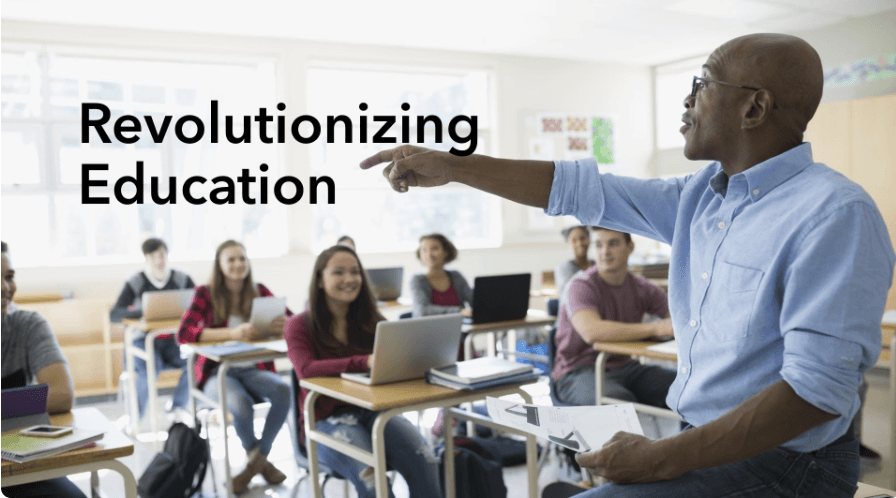
Outdated Education System Exposed: Why We Need a New Model for the Future
In an era defined by rapid technological advancements, our education system remains firmly rooted in outdated practices. Built on a foundation from the Industrial Revolution, it prioritizes memorization and standardized testing over skills that are vital in today’s world, like critical thinking, problem-solving, and adaptability. As artificial intelligence (AI) and edge computing transform industries, the gap between what schools teach and what the world needs has never been more apparent. It’s time for a radical overhaul.
The Core Problem: Memorization Over Understanding
The traditional education model focuses heavily on memorizing facts, preparing students for standardized tests, and evaluating success based on rote learning. This approach might have served well when industries required workers with uniform skills, but today, it’s increasingly inadequate. According to a report by Brookings Institution, many education systems still emphasize standardized testing over deeper learning and understanding. The result is that students often lack the skills necessary to adapt to a rapidly changing job market(
).
Moreover, the COVID-19 pandemic highlighted the shortcomings of this system, showing how unprepared schools were for remote learning and how dependent they remain on outdated teaching methods. This exposed significant inequities, especially in developing regions, where access to digital resources is limited, further disadvantaging already vulnerable students.
How Technology Can Transform Education
AI and edge computing can play a critical role in reshaping how we educate. By integrating edge technology, schools can provide personalized learning experiences that adjust to the needs of each student. Unlike centralized systems that rely on cloud computing, edge computing processes data closer to the user, which can be a game-changer in rural or low-connectivity areas. This enables students to access learning materials, even with limited internet access, by leveraging local edge servers.
AI-powered tools can enhance the learning experience by offering real-time feedback, tutoring systems, and adaptive learning platforms that evolve based on student performance. For example, AI can help design assignments that adapt to each student’s pace, making learning less about memorizing and more about understanding concepts. AI-based education platforms like Khan Academy have already started to explore personalized learning paths, allowing students to move at their own pace and revisit concepts they find challenging.
In classrooms, AI-powered video analysis can be used to assess student engagement and provide teachers with insights into which students might be struggling. Edge computing allows these AI tools to function effectively without needing constant high-speed internet, making it possible to bring these innovations to areas where connectivity is a challenge.

Edge Computing: Bridging the Digital Divide
The World Economic Forum has highlighted the role of edge computing in reducing digital inequality. By processing data closer to where it is generated, edge computing can help bring digital education tools to rural or underserved areas. This is particularly important in developing regions where internet access is not consistent.
For example, schools in Africa can use edge servers to host learning management systems (LMS) locally, enabling students to access educational content even when internet access is slow or intermittent. This can be a critical resource for areas where remote learning might otherwise be impossible. This solution has already been piloted in some schools using platforms like ARED, which provides edge-powered Wi-Fi networks and computing resources, making digital learning more accessible and effective(
).
The Schools of the Future: A Vision for AI Integration
Imagine a classroom where AI-powered video systems analyze classroom dynamics and suggest teaching strategies to improve student engagement. A public Wi-Fi network powered by edge infrastructure ensures that every student, even in remote areas, has access to online learning tools. Furthermore, schools could utilize computing resources on-site, enabling students to run simulations, conduct research, or work on coding projects directly on local servers, without the need for expensive, high-bandwidth internet.
These tools would not only democratize access to education but also enable schools to focus on developing skills like critical thinking and problem-solving, which are essential in a world where AI can handle many routine tasks. For instance, students could use AI to automate data analysis for a science project, focusing more on interpreting the results rather than gathering data manually.
Examples of Successful Innovations in Education
Some countries are already experimenting with new models of education that move beyond traditional methods. Finland, for example, has adopted a teaching model that focuses on phenomenon-based learning rather than subject-based learning. Students are encouraged to explore real-world problems and develop solutions, working in teams and using digital tools to support their projects.
Similarly, India has seen a surge in EdTech platforms like Byju’s, which uses AI to adapt lessons based on a student’s progress, creating a more engaging and personalized learning experience. Byju’s and similar platforms have been instrumental in making high-quality education accessible, especially during the pandemic when students couldn’t attend physical classrooms.
These examples show that it’s possible to shift away from a one-size-fits-all model and move towards an education system that prepares students for the 21st-century workforce.
The Future of Work and Education’s Role
A new educational model must recognize that many of today’s jobs are vulnerable to automation. According to McKinsey, up to 800 million jobs worldwide could be lost to automation by 2030. Therefore, instead of focusing on rote memorization, the emphasis should shift toward fostering entrepreneurial thinking and digital literacy.
The role of schools should evolve to prepare students not just for exams but for life. As discussed by UNESCO, education systems should be reshaped into environments where technology and innovation help students become active problem-solvers and creative thinkers. A system that prioritizes collaboration, digital skills, and adaptability would better equip students for a future where AI is a co-worker rather than a competitor.
Call to Action: Redefining Education Together
To drive this transformation, we must recognize the need for a new social contract for education, as UNESCO suggests. This means engaging not only educators but also policymakers, tech companies, and communities in rethinking what a 21st-century education should look like. It’s not about simply adding more tech to classrooms; it’s about using technology to empower students and make learning more accessible, inclusive, and effective.
The world needs an educational system that is agile, tech-driven, and focused on developing human skills that complement AI, not compete with it. We should be preparing students for the jobs of tomorrow, teaching them to think critically, adapt quickly, and innovate constantly. And if we fail to do this, we risk leaving an entire generation unprepared for the challenges ahead.
Engage and Share Your Thoughts
What do you think about the current state of education? Is it time for a complete overhaul, or are there ways we can improve within the existing framework? How can AI and edge computing best serve schools in your community? Share your thoughts below, and let’s start a conversation on how we can build a better future for our students.
By embracing these changes, we can ensure that education is no longer about memorizing yesterday’s facts but about preparing for tomorrow’s challenges. Let’s not miss this opportunity to rethink and rebuild a system that truly meets the needs of every learner.


